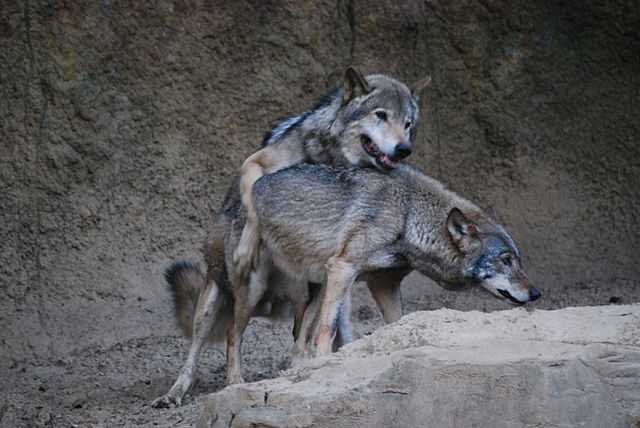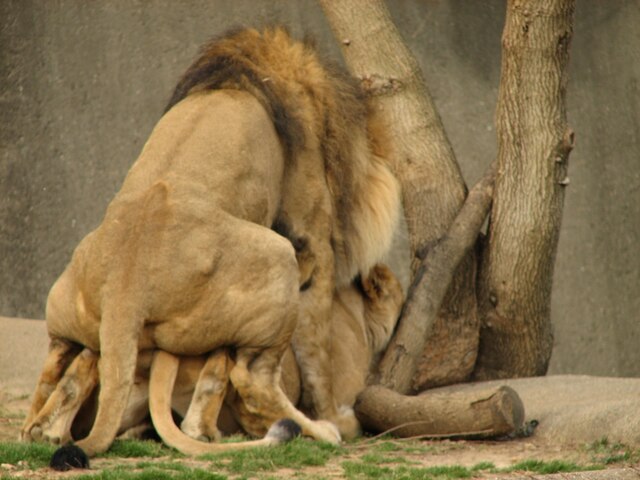In zoology, copulation is animal sexual behavior in which a male introduces sperm into the female's body, especially directly into her reproductive tract. This is an aspect of mating. Many animals that live in water use external fertilization, whereas internal fertilization may have developed from a need to maintain gametes in a liquid medium in the Late Ordovician epoch. Internal fertilization with many vertebrates occurs via cloacal copulation, known as cloacal kiss, while most mammals copulate vaginally, and many basal vertebrates reproduce sexually with external fertilization.
Butterflies mating
Image: Mating hyenas
Image: Male and female Mirounga angustirostris 2
Image: ვარციხე და გეგუთი (14685534012)
In biology, mating is the pairing of either opposite-sex or hermaphroditic organisms for the purposes of sexual reproduction. Fertilization is the fusion of two gametes. Copulation is the union of the sex organs of two sexually reproducing animals for insemination and subsequent internal fertilization. Mating may also lead to external fertilization, as seen in amphibians, fishes and plants. For most species, mating is between two individuals of opposite sexes. However, for some hermaphroditic species, copulation is not required because the parent organism is capable of self-fertilization (autogamy); for example, banana slugs.
Blue-tailed damselflies (Ischnura elegans) mating
Gray wolves mating
Lions mating
African spurred tortoises (Centrochelys sulcata) mating








